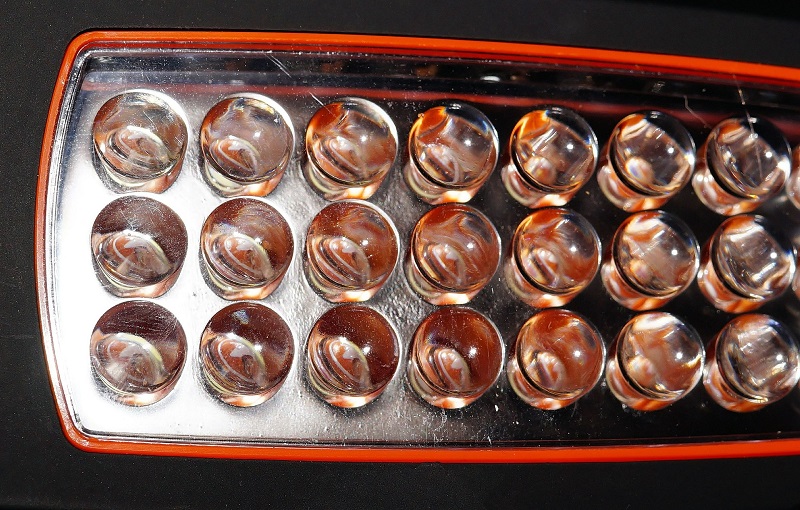Light Emitting Diodes (LEDs) have ushered in a new era of energy-efficient lighting solutions, yet the question arises: are LEDs purely diodes, or do they possess intricacies that complicate their classification? To delve deeply into this topic, it is essential to explore the fundamental essence of what a diode is, juxtaposed against the unique characteristics of LEDs. In this analysis, we will investigate several reasons that delineate why LEDs, despite containing diode attributes, should not be pigeonholed strictly as diodes in the conventional sense.
At its core, a diode is a semiconductor device that allows current to flow in one direction while blocking it in the opposite. This unidirectional behavior, resembling a one-way street, is paramount to the operation of various electronic devices. In contrast, LEDs are a fusion of diodes and optoelectronic phenomena, producing light through electroluminescence. This process introduces layers of complexity that merit examination.
One significant reason that frames LEDs as distinct entities from traditional diodes is their operational purpose. Traditional diodes are often employed primarily for signal rectification or voltage regulation, serving foundational roles in circuitry. Conversely, LEDs are crafted to emit light; their primary function is not merely to allow electrical current to flow, but to harness that current and convert it into visible spectrum outputs—an endeavor that transcends the simple definition of a diode. Thus, while sharing the diode’s basic conductive property, LEDs venture into realms of photonics, thereby straddling two disciplines: electronics and optics.
In addition to their functional divergence, the junction construction and material composition of LEDs further distinguish them. Conventional diodes typically utilize silicon as their semiconductor material. In contrast, LEDs are predominantly constructed from compound semiconductors, such as gallium arsenide or indium gallium nitride. These materials possess unique bandgap properties that enable the manipulation of emitted wavelengths. For instance, through varying compositions within the indium gallium nitride structure, one can produce diverse colors, from deep reds to icy blues, a flexibility that standard diodes lack.
Moreover, the thermal management associated with LED operation amplifies their divergence from traditional diode functionalities. An LED’s efficiency is markedly influenced by thermal conditions. Excessive heat can lead not only to diminished luminous efficacy but also to thermal runaway—a phenomenon where increases in temperature lead to further increases in current flow, ultimately compromising the device’s integrity. Mitigating this thermal build-up necessitates sophisticated heat management solutions, thus adding layers of engineering complexity that are typically not required for standard diodes.
Another pivotal distinction lies within the performance characteristics of LEDs compared to traditional diodes. While both may exhibit some degree of forward voltage drop, the relationship between current and intensity in an LED is non-linear. This characteristic behavior, articulated through the use of the Lambertian distribution, implies that mere increases in current do not linearly translate into augmented light output, distinguishable from the consistency observed in standard diode applications. This non-linear behavior requires specialized circuitry for effective integration, diverging further from the fundamental operation of traditional diodes.
The application spectrum of LEDs expands the conversation beyond simple electronic components into realms fraught with innovation. Their use in diverse domains—from automotive applications to architectural lighting—illustrates their unique place in technological progress. Unlike traditional diodes, which are largely confined to specific applications, LEDs beckon a multidisciplinary approach, intertwining electrical engineering with aesthetics and environmental science. This inherent capability to transform environments emphasizes their identity as more than conventional diodes, drawing parallels to intricate pieces of art that amalgamate technology and design.
Furthermore, there exists a sociocultural dimension to the differentiation between LEDs and diodes. The adoption of LEDs has connoted a societal shift towards sustainability and energy efficiency, emphasizing a light source that supports ecological consciousness. This transformative role as agents of change in energy consumption transcends any technologically simplistic view of them as mere diodes. They symbolize progress, embodying a nexus between innovation and responsibility—idealistic pillars of contemporary technology.
Finally, we explore the role of LEDs within the context of evolving semiconductor technology. The emergence of organic light-emitting diodes (OLEDs) exemplifies yet another departure from the crude confines of traditional diodes. OLEDs leverage organic compounds to emit light, showcasing an exhilarating leap in lighting technology that diverges from both classical diodes and LEDs. This evolution hints at a future where the classification of light-emitting materials will defy the limitations imposed by historical definitions, folding the concept of diodes into a broader continuum of technological evolution.
In conclusion, while LEDs inherently retain the attributes associated with diodes, their function, construction, performance characteristics, and broader societal implications render them a unique category within semiconductor devices. To classify them strictly as diodes is akin to deeming a symphony mere noise; each element plays a distinct role, contributing to a larger, more intricate tapestry of light and technology. As technological advancements continue to unfold, the innovative spirit embodied by LEDs challenges us to reassess our understanding of classic definitions, encouraging a dialogue that fosters both appreciation for and deeper investigation into the evolving landscape of electronics and photonics.












